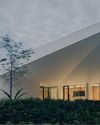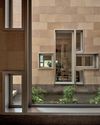
When we think of modernist buildings from Singapore’s recent past, we often single out the “heroic” examples, such as Golden Mile Complex, Jurong Town Hall, the former Singapore Conference Hall and Trade Union House, and the former Subordinate Court.
These are heroic because they were bold and visionary in conception. Their striking forms and delightful spaces reflect the architects’ ingenuity.
Some also attribute their significance to their zeitgeist, the fearless, can-do spirit of the nation-building era of Singapore during the 1960s and 1970s.
Indeed, many of these examples of heroic modernism have rightly been conserved by the authorities, or are being studied for conservation due to their architectural and social significance.
Heroic modernism on its own, however, does not fully capture the richness and diversity of modernist buildings in Singapore.
Singapore is one of the most modernist countries in the world. An overwhelmingly large proportion of its built environment was constructed after the 1960s, with the city centre primarily a result of urban renewal.
Around 80 percent of the population resides in outlying satellite new towns built around the same time.
Both of these were products of the “Ring Plan”, first proposed by the United Nations planning experts and later implemented in a series of Concept Plans.
Taking the whole island as a planning unit, these plans radically transformed the territory of the city-state and how Singaporeans live through what Rem Koolhaas characterised as the tabula rasa mode of development typical of modernism.
This story is from the Issue 117 edition of d+a.
Start your 7-day Magzter GOLD free trial to access thousands of curated premium stories, and 9,000+ magazines and newspapers.
Already a subscriber ? Sign In
This story is from the Issue 117 edition of d+a.
Start your 7-day Magzter GOLD free trial to access thousands of curated premium stories, and 9,000+ magazines and newspapers.
Already a subscriber? Sign In

Tailored For The Curious Explorer
The new Alma House at the New Bahru enclave reflects the collaborative spirit of a school environment.

Eco And Egalitarian
Can a building represent a culture? Berrel Kräutler Architekten's sensitive renovation of the Embassy of Switzerland in Singapore stimulates discourse.

Building A Green Home
This semi-detached house by Zivy Architects explores passive tropical design, the delight in architecture and the issues of multi-generational living.

The Natural Balance
Inspired by the serene beauty of dewdrops, the Antao Collection by Villeroy & Boch transforms bathrooms into wellness sanctuaries, combining sustainability with timeless elegance.

Inspiring Creativity And Exploration
The new Hafary House at Lavender reflects the brand’s vibrancy and innovation, as well as provide an inspiring and engaging space for customers.

Home Is Where The Heart Is
A vacation house is reimagined for a multi-generational family to gather for holidays in the bucolic setting of Yongjia in Zhejiang, China.

balancing act: nature and humanity
In this inspiration-led series, we asked Jay Liu and Alex Liu, co-founders of Right Angle Studio, to dream up a unique interior concept using mainly items from Space Furniture.

rethinking, remaking, reframing
Aoki Akio, the founder of DESIGNART TOKYO discusses the importance and legacy of Tokyo's eminent art and design event, particularly for young creatives.

rebuilding communities
Shift2024, the much-anticipated conference returns with a stellar line-up of prolific architects making their mark in Asian urban design.

unparalleled italian craftsmanship
Filippo Arnaboldi, Chief Executive Officer of Frette, tells us how this luxury lifestyle Italian brand is moving forward with times yet not forgetting about its existing legacy.